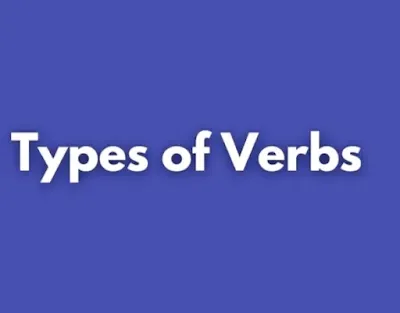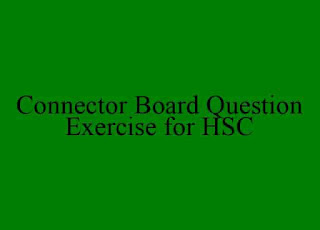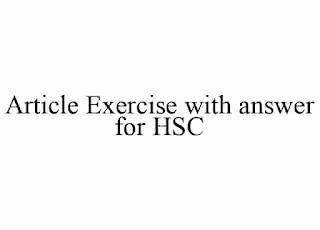What are 15 types of verb?
There are many different types of verbs in the English language, but here are 15 common categories:
1. Action verbs: Action verbs describe physical or mental actions that a person, animal, object, or force can do. Examples include run, jump, think, and write.
2. Linking verbs: Linking verbs do not describe an action, but rather connect the subject of a sentence to a noun or adjective that describes it. The most common linking verb is "be," but others include appear, seem, become, and feel. For example: "The sky is blue." In this sentence, "is" is a linking verb that connects the subject "sky" to the noun "blue," which describes it.
3. Auxiliary verbs: Auxiliary verbs, also known as helping verbs, are used with a main verb to form verb tenses, moods, and voices. The most common auxiliary verbs are "be," "have," and "do," but others include will, shall, and might. For example: "I am writing a letter." In this sentence, "am" is an auxiliary verb that helps to form the present continuous tense of the main verb "writing."
4. Modal verbs: Modal verbs express possibility, necessity, or permission. Examples include can, could, may, might, must, ought, shall, should, will, and would. For example: "You must finish your homework before you go to bed." In this sentence, "must" is a modal verb that expresses necessity.
5. Irregular verbs: Irregular verbs do not follow the regular pattern for conjugation. They often have different past tense and past participle forms than regular verbs. Examples include go, have, see, and be. For example, the past tense of the irregular verb "go" is "went," rather than "goed," which is the past tense of the regular verb "lead."
6. Transitive verbs: Transitive verbs require an object to complete their meaning. The object is the noun or pronoun that receives the action of the verb. For example: "She ate the sandwich." In this sentence, "sandwich" is the object of the transitive verb "ate."
7. Intransitive verbs: Intransitive verbs do not require an object to complete their meaning. They can stand alone as the verb in a sentence. For example: "The sun rises in the east." In this sentence, "rises" is an intransitive verb because it does not require an object.
8. Stative verbs: Stative verbs describe a state or condition rather than an action. They do not usually have a continuous form and are not usually used in the imperative mood. Examples include be, have, own, seem, and believe. For example: "She is happy." In this sentence, "is" is a linking verb and "happy" is an adjective that describes the subject "she." "Happy" does not describe an action, but rather a state of being.
9. Dynamic verbs: Dynamic verbs describe an action or change. They can be used in the continuous form and the imperative mood. Examples include run, grow, learn, and change. For example: "I am running to the store." In this sentence, "running" is a dynamic verb because it describes an action that is taking place.
10. Regular verbs: Regular verbs follow the regular pattern for conjugation. They add -ed to form the past tense and -ed or -en to form the past participle. Examples include play, jump, and talk. For example: "I played basketball yesterday." In this sentence, "played" is the past tense form of the regular verb "play."
11. Reflexive verbs: Reflexive verbs reflect the action back on the subject. They are used with reflexive pronouns, such as myself, ourselves, yourself, yourselves, himself, herself, itself, and themselves. For example: "She dressed herself." In this sentence, "dressed" is a reflexive verb because the action of dressing is being done by the subject, "she," to herself.
12. Reciprocal verbs: Reciprocal verbs describe a mutual action between two or more subjects. They are used with reciprocal pronouns, such as each other and one another. For example: "The two friends greeted each other." In this sentence, "greeted" is a reciprocal verb because the action of greeting is being done by both friends to each other.
13. Phrasal verbs: Phrasal verbs consist of a verb and a preposition or adverb. They can have different meanings from the original verb, and the preposition or adverb can change the meaning of the verb. Examples include turn off, run out, and look up. For example: "She turned off the television." In this sentence, "turned off" is a phrasal verb that means to stop the operation of something.
14. Separable phrasal verbs: Separable phrasal verbs are phrasal verbs in which the object can go between the verb and the preposition or adverb. For example: "She turned the television off." In this sentence, "the television" is the object of the phrasal verb "turned off," and it can be placed between the verb and the preposition "off."
15. Inseparable phrasal verbs: Inseparable phrasal verbs are phrasal verbs in which the object must come after the verb and preposition or adverb. For example: "She looks up to her teacher." In this sentence, "her teacher" is the object of the phrasal verb "looks up to," and it must come after the verb and preposition "up to."
I hope this additional information helps to clarify the different types of verbs. If you have any other questions, please feel free to ask in comments section.



